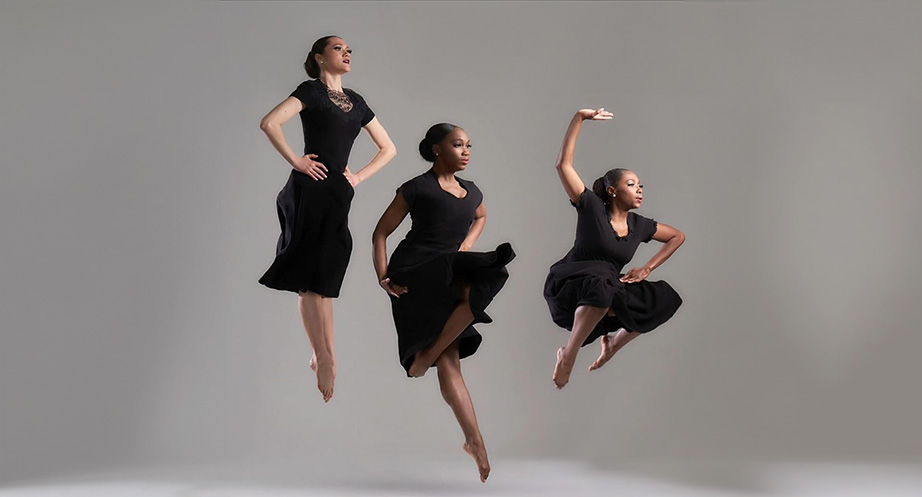photo credit: dancevox.com
by Janine Bryant for The Dance Journal
A day in the life of a dancer can be intense and fast-paced. In the course of just one day, dancers can go from class to rehearsal, to another class and then perform in the evening. Knowing what to do in the case of minor injuries sustained on the job can truly make a difference at the end of the day. No dancer wants arrive to a performance having not had enough time in the day to properly treat a blister or abrasion, muscle strain or joint sprain. No matter how minor, the pressure on a fresh blister from a pointe shoe or an unprotected split in the modern dancer’s foot can be incredibly painful and seriously hinder a performance.
Being prepared is key. Dancers should carry their favorite products and treatment supplies (suggestions in bold) in their equipment bags so that they are prepared for everything that an intense dance day can bring.
The following are recommendations to help dancers deal with common, often daily ailments.
BLISTERS, CORNS OR SORE TOES: Do not pierce your blister! Surround the blister or painful area with a foam or felt cushion, see Dr. Scholl’s here: http://www.drscholls.com/products/BlisterTreatment or here: Dr. Tina Boucher in Connecticut has a great blog on this: http://dancersfeetct.blogspot.com/2011/03/blisters-from-pointe-shoes.html.
BRUISES, STRAINS OR SPRAINS: Remember P.R.I.C.E.D! Most of us are familiar with R.I.C.E., but the ‘D’ has been recently added for DIAGNOSIS, which is something a busy dancer needs to make time for, if necessary! In addition, the ‘P’ has also been added to ensure an injury is approached from the beginning with caution.
Protection: Remove additional danger or risk from the injury or injured area.
Rest: Stop performing if you are experiencing swelling or pain and limping. If this is not an option, check in with your artistic director to amend choreography so that your injury is not made worse from your performing on it. It would be in the artistic director’s best interest to help you protect your instrument (aka, your body) during rehearsal or performance. Speak up! Your career may depend on it.
Ice: Ice pack for 15 minutes – Amazon.com has a great assortment of flexible and reusable packs here: http://www.amazon.com/s/?ie=UTF8&keywords=ice+packs+for+injuries&tag=mh0b-20&index=hpc&hvadid=1470702397&ref=pd_sl_8aksc5976r_b
Also see ‘sports first aid kits’ at great prices here: http://www.first-aid-product.com/consumer/sports.htm
Compression: Sports tape, ace bandage or kinesio tape (KT should be applied by a trained professional) are great tools that can speed healing. Some tapes and bandages should not be left on overnight – check with your healthcare practitioner.
Elevation: Elevate the leg or support the arm in a bandage/sling.
Diagnosis: Don’t forget this step! Find appropriate help as soon as possible and do not ‘dance through’ a serious injury.
MUSCLE CRAMPS AND TIGHTNESS: If muscles are very tender, treat them as a strain (see P.R.I.C.E.D). If your whole muscle is in spasm, try slow stretching and massage in the direction of the heart. Dancers should make sure they are thoroughly hydrated – see the previous ‘Bryant’s Dance Medicine and Science’ blog post on Hydration for Dancers. Massage should be used only in the appropriate instance, otherwise, during injury, ‘do no H.A.R.M.’: No Heat, Alcohol, Running/exercise, or Massage.
CUTS WITH MODERATE BLEEDING: Remove surplus blood with swabs or prep pad and clean with antiseptic wipe. Irrigate with saline, if necessary, and close with steri strip, soft dressing and sports tape.
SPLINTERS: Modern/contemporary dancers, and those dancing barefoot most of the time, pack small tweezers in your bag, remove splinters and clean with an antiseptic wipe.
Remember, your body is your instrument and will give you years of great dancing if you give it proper TLC!
Until next time, friends, dance healthy and strong!
Janine Bryant
Director of Dance Programs, Eastern University
IADMS Education Committee Member
[email protected]
***Select information was adapted from DanceUK’s Information Sheet #2, The Dancer’s First Aid Box. More complete information is available here: www.danceuk.org
***If you think you may have a medical emergency, call your doctor or 911 immediately. PhiladelphiaDANCE.org does not recommend or endorse any specific tests, physicians, products, procedures, opinions, or other information that may be mentioned on this site. Reliance on any information provided by PhiladelphiaDANCE.org, Dance Journal authors, others appearing on the site at the invitation of PhiladelphiaDANCE.org/The Dance Journal, or other visitors to the site is solely at your own risk.
Janine received her B.F.A. in Modern Dance from the University of the Arts in 1986. Janine is an active member of the International Association for Dance Medicine and Science and was recently added to their Peer Review Board, Poster Judging Committee and Education Committee. Janine also is a member of PAMA (Performing Arts Medicine Association) and is currently earning her PhD in Dance Medicine and Science from The University of Wolverhampton in the United Kingdom.
- Snapping Hip Syndrome - July 11, 2016
- Safely Increasing Range of Motion or Never, EVER Stretch a Cold Muscle - January 7, 2016
- The Aging Dancer – Part 3 – A Global Survey - November 1, 2015







